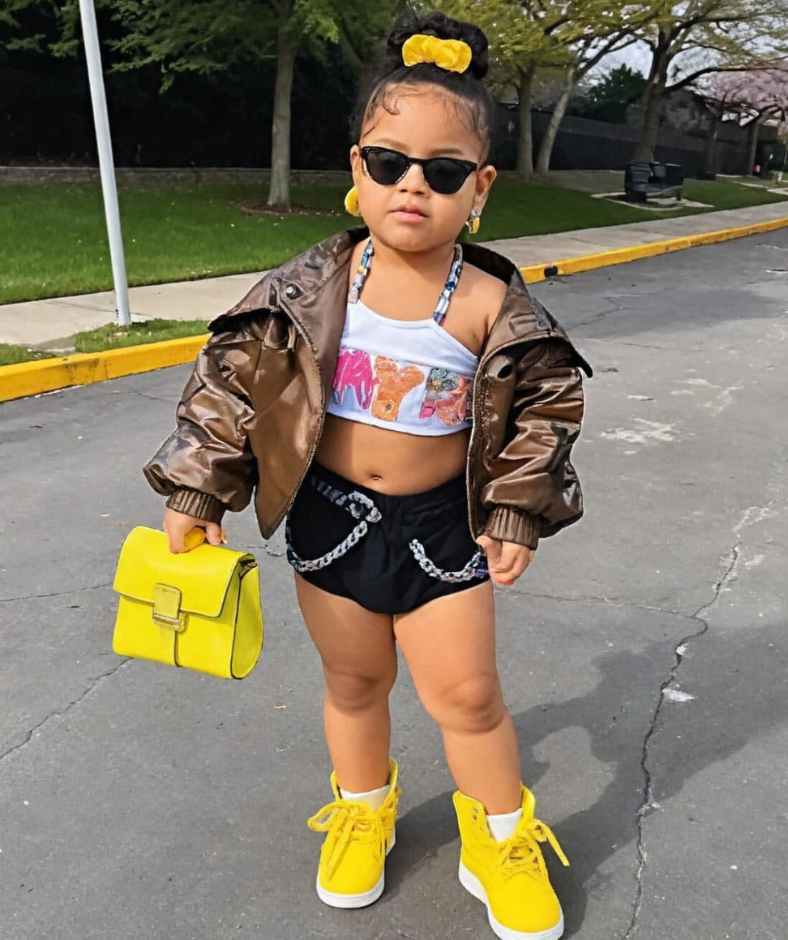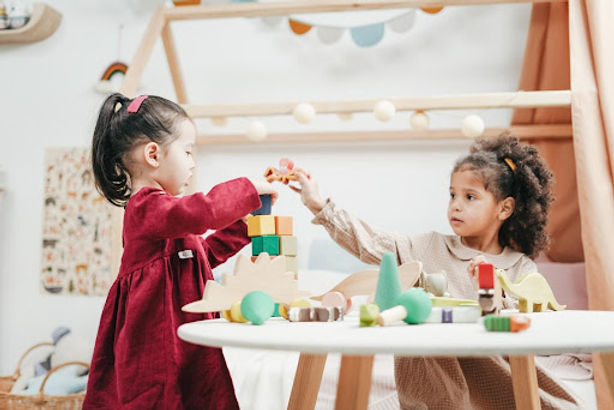Children are becoming increasingly vocal about their clothing preferences at a young age, often expressing their desire to wear fashionable clothes. This raises an important question for parents and guardians: should children be allowed to choose fashionable clothes, or should comfort and practicality come first? In this article, we’ll explore both perspectives and the importance of striking a balance between style and comfort when it comes to dressing children.
Encouraging Self-Expression Through Fashionable Clothing

Many parents believe that allowing children to wear fashionable clothes gives them a sense of independence and helps foster their self-expression. Fashion, after all, can be a form of creative expression, even for young children.
1. Boosting Confidence and Self-Expression
When children are given the freedom to choose their own clothes, they develop a sense of autonomy. It allows them to express their personal style and preferences, which is essential for building self-confidence. By asking children what they want to wear, parents give them the opportunity to voice their opinions and make choices, empowering them in a small but meaningful way. Fashion becomes a tool for self-expression, allowing kids to showcase their personalities through their outfits.
2. Developing Decision-Making Skills
Allowing children to choose their clothes can help them develop decision-making skills. When faced with multiple options, children learn how to weigh the pros and cons of each outfit and make a choice based on their preferences. This simple act of selecting clothes helps them practice thinking critically, making decisions, and even managing small responsibilities. It’s a great way to help children become more self-sufficient and confident in their choices.
3. Reducing Daily Struggles with Clothing
If you’ve ever had a child throw a tantrum over a shirt they didn’t want to wear, you understand how stressful getting dressed can be. Allowing children to pick their own outfits often minimizes resistance and fosters cooperation. When kids choose their own clothes, they’re more likely to wear them without complaints, making mornings smoother for parents and children alike.
Potential Downsides of Fashionable Clothing for Children
While encouraging fashion choices in kids can have many positive effects, there are also valid concerns that some parents have about prioritizing fashion over practicality.
1. Fashionable Clothes Can Be Expensive

One of the primary concerns parents have is the cost of keeping up with fashion trends. Fashionable children’s clothes, especially from well-known brands, can be pricey. For families on a budget, constantly buying new, trendy items may not be feasible. This can create an unhealthy dynamic if children develop materialistic tendencies, associating self-worth with the cost of their clothes.
2. Focusing Too Much on Appearance
While fashion can be a creative outlet, an excessive focus on appearance may lead children to value materialism over other important traits, such as kindness, empathy, and intelligence. Encouraging children to prioritize fashionable clothes can inadvertently send the message that appearance is more important than character or other achievements. Parents must strike a balance to ensure that their child’s sense of self-worth doesn’t become tied solely to what they wear.
3. Comparing Themselves to Others
Children who are constantly exposed to fashion trends may begin to compare themselves to others, especially if they see models or other children dressed in expensive, stylish clothes. This can lead to feelings of inadequacy or a desire to fit into unrealistic beauty standards. Social comparison at a young age can affect children’s self-esteem and may create unnecessary pressure to conform to certain societal ideals of beauty and fashion.
The Importance of Comfort in Children’s Clothing

While fashion is important to many children, comfort should always remain a priority, especially for younger kids who are still growing and developing. Comfortable clothing allows children to move freely, play, and explore their environment without restrictions.
1. Prioritizing Practicality
Children’s clothing needs to withstand the daily wear and tear of active play. Practical, comfortable clothes made from breathable fabrics like cotton or linen are ideal for young children who spend most of their time running, jumping, and exploring. These materials are soft on the skin, easy to clean, and allow kids to move without discomfort.
2. Balancing Style with Function

Parents can find a middle ground by choosing stylish yet comfortable outfits for their children. For example, opting for trendy designs in kid-friendly fabrics ensures that children feel good and look good. Functional fashion, such as stretchy jeans or playful, colorful dresses, allows kids to express their style without sacrificing comfort.
3. Dressing for Different Occasions
While it’s important to allow children to wear fashionable clothes for special events, parents should ensure that everyday wear remains practical. For instance, kids can enjoy picking out stylish outfits for family gatherings or holidays, but school clothes should prioritize comfort and durability. Striking this balance helps children understand the importance of dressing appropriately for different situations.
Social and Psychological Impacts of Fashion on Children
Fashion influences children not only in how they look but also in how they feel and interact with their peers. Fashion choices can impact children’s social interactions and psychological development.
1. Fashion Can Encourage Creativity
When children are allowed to experiment with different styles, they develop a sense of creativity. Fashion can become a playful activity, where kids mix and match colors, patterns, and accessories. This creative freedom fosters their imagination and helps them develop a unique sense of style.
2. Being Fashionable Can Boost Social Skills
Wearing fashionable clothes can also boost a child’s confidence in social settings. When children feel good about their appearance, they are more likely to engage with others and participate in group activities. This confidence can improve their social skills and help them form meaningful friendships.
3. Avoiding Fashion Pressure

However, parents should be mindful of the pressure that comes with fashion trends. Not every child is interested in wearing the latest styles, and pushing them to follow trends can create unnecessary stress. It’s essential to respect a child’s individual preferences, whether they lean toward fashion or not, and avoid putting undue pressure on them to fit in with their peers through clothing.
Conclusion: Finding a Balance Between Fashion and Comfort for Kids
In the debate over whether children should wear fashionable clothes, the answer ultimately lies in balance. Allowing kids to choose stylish outfits can boost their confidence, creativity, and self-expression, but it’s equally important to ensure their clothing remains comfortable and practical for everyday life. By offering a balance of fashionable choices for special occasions and practical attire for daily wear, parents can help their children develop a healthy relationship with clothing—one that prioritizes both comfort and personal style.
As parents, it’s important to stay connected with your children, involve them in decision-making, and encourage them to express their individuality while guiding them toward understanding the importance of balance. After all, fashion should be fun, not stressful, and finding the right mix can lead to a happy, confident, and stylish child.


